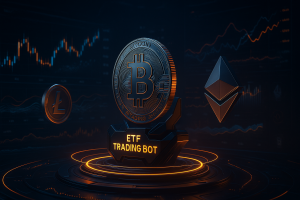Cryptocurrency trading on Web3

The development of technology and decentralization in the world of digital assets is undergoing radical change. At the core of these shifts is the Web 3 concept.
Cryptocurrency trading on Web 3 platforms differs from traditional, state-controlled centralized exchanges (CEX). The primary form involves platforms that operate without intermediaries. They allow users to trade cryptocurrencies directly through smart contracts.
Traditional systems position middlemen between buyers and sellers, charging fees for their services. In Web 3, all operations are executed directly between users via smart contracts, reducing costs and increasing trading efficiency.
This ecosystem unlocks new potential for companies. Going forward, decentralized exchanges are expected to become even more popular with the implementation of scaling solutions and continued interface development.
It is also likely that these platforms will strengthen towards economic growth, opening new opportunities for capital attraction and hybrid financial services models. Today, many projects based on this system are actively exploring options to create bridges between centralized and decentralized virtual platforms.
One key aspect of trading involves liquidity pools. On traditional exchanges, market makers handle liquidity, whereas on decentralized platforms, users themselves become liquidity providers.
This model democratizes the trading process, making it accessible to everyday users. However, participation in liquidity provision involves certain risks, such as permanent loss.
One of the advantages of Web 3 trading systems is the lowering of barriers to entering the cryptocurrency and financial instrument markets.
In Web 3, trading and access to real-world products are carried out directly through encryption and cryptography, making the process faster and simpler.
Cryptocurrency trading systems in Web 3 are not just a new phenomenon in finance – they represent a fundamental transformation of the entire ecosystem. Decentralization, protocol openness, and smart contracts are changing trading approaches, making it more accessible, secure, and independent from intermediaries.
As this technology develops and decentralized financial platforms expand, we can expect an increasing number of users shifting from traditional financial systems to decentralized solutions. These changes will open new opportunities for traders and investors, while also presenting challenges related to security and regulation.
Category news: Product and Bot Features
-

Bot for trading goods
In an era of rapidly advancing digital technology, businesses are increasingly turning to automated solutions that simplify and accelerate workflows. One such solution is trading bots – programs capable of replacing or complementing human labor in the sales process. Their integration into product trading offers a number of substantial advantages that significantly enhance business efficiency. […]
-

Real-Time Trading Bot
Real-time trading bots connect directly to trading platforms via API. They receive up-to-the-second data on prices, volumes, supply and demand, and use predefined algorithms to execute trades. These algorithms can be simple – for example, buying when the price drops and selling when it rises – or highly sophisticated, incorporating technical analysis, artificial intelligence, or […]
-

ETF Trading Bot
Thanks to rapid technological development, investing is gradually shifting from a domain reserved for professionals to an area of widespread public interest. Exchange-traded funds (ETFs), in particular, have grown extremely popular, offering diversification, transparency, and ease of purchase. Against this backdrop, a new tool is emerging – an ETF trading bot. ETF funds, or exchange-traded […]
-

Algorithmic trading bot
The use of trading bots in algorithmic trading has become a true breakthrough in the financial world. These intelligent systems offer a range of significant advantages, which is why they are increasingly replacing manual trading and opening up new horizons for market participants. Algorithmic trading is a method of automated buying and selling of assets […]
Latest news
-

Bot for trading goods
In an era of rapidly advancing digital technology, businesses are increasingly turning to automated solutions that simplify and accelerate workflows. One such solution is trading bots – programs capable of replacing or complementing human labor in the sales process. Their integration into product trading offers a number of substantial advantages that significantly enhance business efficiency. […]
-

SHIB
SHIB, or Shiba Inu, is a cryptocurrency that emerged in 2020, inspired by the popular meme coin Dogecoin. It quickly caught the attention of the crypto community thanks to its extremely low price per token and a marketing strategy centered around social media and fan engagement. Although SHIB was initially conceived as a “joke,” its […]
-

Real-Time Trading Bot
Real-time trading bots connect directly to trading platforms via API. They receive up-to-the-second data on prices, volumes, supply and demand, and use predefined algorithms to execute trades. These algorithms can be simple – for example, buying when the price drops and selling when it rises – or highly sophisticated, incorporating technical analysis, artificial intelligence, or […]
-

ETF Trading Bot
Thanks to rapid technological development, investing is gradually shifting from a domain reserved for professionals to an area of widespread public interest. Exchange-traded funds (ETFs), in particular, have grown extremely popular, offering diversification, transparency, and ease of purchase. Against this backdrop, a new tool is emerging – an ETF trading bot. ETF funds, or exchange-traded […]

